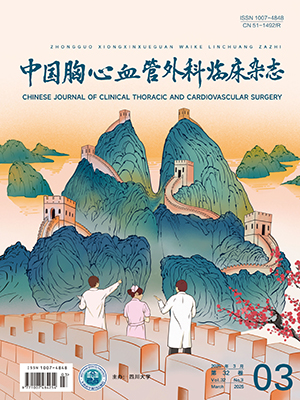| 1. |
钟婷婷, 侯婧瑛, 郭天柱, 等. 心肌干细胞移植可短期内改善心肌梗死心电生理稳定性和提高室颤阈值. 中国组织工程研究, 2015, 28(19): 4537-4543.
|
| 2. |
张汉平, 蔡晓庆, 马凌. 脂肪间充质干细胞移植治疗兔急性心肌梗死的实验. 国际心血管病杂志, 2015, 6(42): 407-411.
|
| 3. |
王巍, 李肖甫, 李中健. 不同孕周人脐带间充质干细胞移植改善心肌梗死模型心脏功能的比较. 中国组织工程研究, 2016, 20(6): 799-806.
|
| 4. |
陈晓明, 崔丹阳, 张明. 急性心肌梗死合并心衰患者应用干细胞移植的临床观察. 大连医科大学学报, 2014, 36(2): 157-159.
|
| 5. |
侯江龙, 武忠. 细胞移植治疗心肌梗死的研究进展. 中国胸心血管外科临床杂志, 2015, 22(5): 486-490.
|
| 6. |
Wendel JS, Ye L, Tao R, et al. Functional effects of a tissue-engineered cardiac patch from human induced pluripotent stem cell-derived cardiomyocytes in a rat infarct model. Stem Cells Transl Med, 2015, 4(11): 1324-1332.
|
| 7. |
Kloner RA, Dai W, Shi J, et al. Rebuilding the infarcted heart with noncellular material. Regen Med, 2015, 10(6): 683-685.
|
| 8. |
Khan M, Nickoloff E, Abramova T, et al. Embryonic stem cell-derived exosomes promote endogenous repair mechanisms and enhance cardiac function following myocardial infarction. Circ Res, 2015, 117(1): 52-64.
|
| 9. |
Gulati AK. Regeneration pattern of cardiac and skeletal muscle after transplantation into a skeletal muscle bed in rats. Anat Rec, 1995, 242(2): 188-194.
|
| 10. |
Li RK, Mickle DA, Weisel RD, et al. In vivo survival and function of transplanted rat cardiomyocytes.Circ Res, 1996, 78(2): 283-288.
|
| 11. |
Dai W, Hale SL, Kloner RA. Implantation of immature neonatal cardiac cells into the wall of the aorta in rats a novel model for studying morphological and functional development of heart cells in an extracardiac environment. Circulation, 2004, 110(3): 324-329.
|
| 12. |
Dai W, Hale SL, Kloner RA. Development of a spontaneously beating vein by cardiomyocyte transplantation in the wall of the inferior vena cava in a rat: A pilot study.J Vasc Surg, 2007, 45(4): 817-820.
|
| 13. |
Dai W, Hale SL, Kloner RA. Cardiac cells implanted within the outer aortic wall of rats generate measurable contractile force.Regen Med, 2006, 1(1): 119-124.
|
| 14. |
Biermann D, Eder A, Arndt F, et al.Towards a tissue-engineered contractile Fontan-conduit: the fate of cardiac myocytes in the subpulmonary circulation. PLoS One, 2016, 11(11): e0166963.
|




